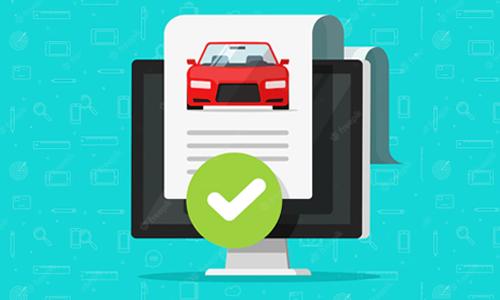- What is Car Excess Insurance?
- Types of Car Insurance Excess
- When Are You Supposed to Pay Excess?
- Damages Caused in a Road Accident Due to Your Fault
- Damages Cause in a Road Accident Where the Third-Party at Fault is Untraceable
- Any Damages That Can Not Be Covered by a Third-Party Person/Insurance
- Can You Change Your Compulsory Excess?
- Can You Change Your Voluntary Excess?
- How Does Car Insurance Excess Affect Premium Rates?
- How Much Voluntary Car Insurance Excess Should You Choose to Pay?
- Key Takeaways
- Dubai Car Insurance Guide
Car insurance excess is the amount that a policyholder is liable to pay when making a claim against their car insurance plan. Car insurance excess or deductible is pre-specified in your policy documents and cannot be changed later on, with the excess amount to be paid at the time of making a claim being decided by reviewing your policy terms.
For instance, assume that you have car insurance excess of AED 500 in your policy documents. You submitted a claim and the final repair amount came out to be AED 2,000. In this case, you will pay AED 500, with the rest of AED 1,5000 to be paid by the insurance company.
What is Car Excess Insurance?
Car excess protection or car excess insurance, a specialised cover offered by some car insurance providers, covers the amount that you pay as car insurance excess when you make the claim. The coverage sum is decided at the outset when you make a claim and is generally sufficient to cover voluntary as well as compulsory excess.
You can only opt for a car excess insurance cover after taking a car insurance plan. Car excess insurance can be useful to claim back the complete amount that you paid as car insurance excess. However, if you end up never making a claim against your car insurance plan, the premium that you paid for your excess protection cover will become an unrequired expense.
Car insurance excess can be of different types, with the major categories discussed in the next section.
Types of Car Insurance Excess
Car insurance excess can be categorised into two parts – compulsory and voluntary. Given below are the key differences between them:
Compulsory Car Insurance Excess
Mandatory or compulsory car insurance excess is decided by the insurance provider and has to be paid as per the stipulated guidelines. As the policyholder has no control over their mandatory car insurance excess in this type of excess, there is no scope for negotiation. The insurance providers here decide the mandatory or compulsory excess amount after considering several factors like the age of the policyholder, driving record, claim history, etc.
Voluntary Car Insurance Excess
The amount of voluntary car insurance excess, as the name may imply, is chosen by the policyholders themselves. You can choose however much voluntary excess you want to pay when you buy your car insurance plan. It is also possible to choose AED 0 as voluntary excess. Insurance companies generally provide a range for voluntary excess, with policyholders allowed to select the amount as they see fit from this range.
A key aspect to observe here is that some providers may impose other kinds of car insurance excess as well, with the examples being age excess, driving history excess, unnamed drivers excess, etc. Such car insurance excesses are not standard and you won’t necessarily find them with every provider. However, you should properly read your policy wordings to see if there is a provision for other excesses in your plan before finalising the plan.

When Are You Supposed to Pay Excess?
In theoretical terms, car insurance excess is to be paid if you submit a claim against any benefit of your comprehensive car insurance plan. So if your insurance provider is liable to cover your damage repair expenses in a particular situation, you will be required to pay the excess.
The following are the cases where you are liable to pay all kinds of car insurance excess applicable on your plan:
Damages Caused in a Road Accident Due to Your Fault
If you were involved in a road accident where you were at fault, your car insurance comprehensive coverage will set in to cover the damage repair expenses. You are liable to pay all applicable deductibles or excess in this case.
Damages Cause in a Road Accident Where the Third-Party at Fault is Untraceable
Suppose you were involved in a road accident where a third-party driver was at fault. However, you do not have the name, address, or vehicle number of the third-party driver. Since the third- party is untraceable, your insurance provider will be liable to cover the repair expenses for damage incurred by your car. Here, you will be liable to pay the applicable excess as well.

Any Damages That Can Not Be Covered by a Third-Party Person/Insurance
Be it theft or damages, any kind of expenses that cannot be covered by a third-party insurance provider are covered by your insurance provider. Thus, you are liable to pay the applicable excess in cases related to the theft of car accessories, theft of the car itself, damages by collision, etc.
Given below is an overview of the different plausible claim scenarios. Let’s cover when you are liable to pay excess:
When Your Claim |
Compulsory Excess |
Voluntary Excess |
|
Damages caused in an incident where the third-party driver was at fault, and you have the name and address of the third-party driver at fault as well |
No Excess to be Paid |
No Excess to be Paid |
|
Damages caused in an incident where a third-party driver was at fault but you do not have the name and/or address of the driver |
Paid |
Paid |
|
Damages caused by someone who was driving your car (like your named drivers, for example) |
Paid |
Paid |
|
Damages by collisions (with/by animals or a non-living thing) |
Paid |
Paid |
|
Damages incurred by a parked car |
Paid |
Paid |
|
Damages caused when you or a named driver was parking the car |
Paid |
Paid |
|
Damages due to covered man-made disasters |
Paid |
Paid |
|
Damaged due to covered natural disasters |
Paid |
Paid |
|
Theft of the car or car accessories |
Paid |
Paid |
Can You Change Your Compulsory Excess?
No, you are mandated to pay your compulsory excess as per the amount set by your insurance provider. It cannot be changed or negotiated at any time during the tenure of your car insurance plan. Your risk profile decides the amount of compulsory excess you will pay. Young and less experienced drivers, on average, are likely to get higher compulsory excess with their car insurance plans. On the other hand, as you get older and gain more experience to become a better driver, you may get lower compulsory excess. Driving a highly expensive or highly valuable car can also attract high compulsory excess.
Can You Change Your Voluntary Excess?
You are free to choose your voluntary excess amount when you are buying the plan. You can even pick different voluntary excess amounts and check out how it impacts your premium amount. However, you cannot change the final voluntary excess amount after you have bought the plan or when you make a car insurance claim either.
How Does Car Insurance Excess Affect Premium Rates?
Compulsory excess amounts have little influence on the premium rates of your car insurance plans as they are decided as per your risk profile and are non-negotiable. However, voluntary excess can effectively increase or decrease your car insurance prices.
Higher voluntary excess leads to lower premiums, as taking on a higher deductible amount may indicate that the policyholder is less likely to make claims. It can also mean that the policyholder is confident in their driving. As high voluntary deductibles decrease the risk taken by the insurance company when they sign on a policyholder, the premiums get lowered when excess goes higher.
How Much Voluntary Car Insurance Excess Should You Choose to Pay?
The amount of the voluntary excess that you opt for should depend on the amount you can afford to pay if you make a claim. Choosing a high excess amount that you cannot pay up after submitting a claim request may result in several complications and financial setbacks. Consequently, it is advisable to draw out your budget and check the amount that you can spare for repairs if your car is ever damaged heavily.
Voluntary deductibles can lower your premium rates, as discussed in the previous section. However, you should not let this fact cloud your judgement. Avoid choosing a high voluntary deductible just so that you can get lower premiums as this may end up backfiring when you make a claim.
Key Takeaways
- Car insurance excess is paid by the policyholder at the time of claim settlement.
- There are two major types of car insurance excess – mandatory and voluntary.
- Mandatory excess is non-negotiable while voluntary excess can be chosen by the policyholders themselves.
- Taking voluntary car insurance excess helps in reducing car insurance premium rates.
- Car excess insurance or protection is a supplementary cover used to claim back the amount your pay as car insurance excess.
- Voluntary car insurance excess should be carefully chosen after analysing your payment capabilities.
| Car Insurance Addons | |
|---|---|
| Personal Accident Cover | Agency Repair |
| Engine Protection Cover | IDV-Insured Declared Value |
| No Claim Bouns | Passenger Cover |
Dubai Car Insurance Guide
More From Car Insurance
- Recent Articles
- Popular Articles










-in-car-insurance.jpg)










